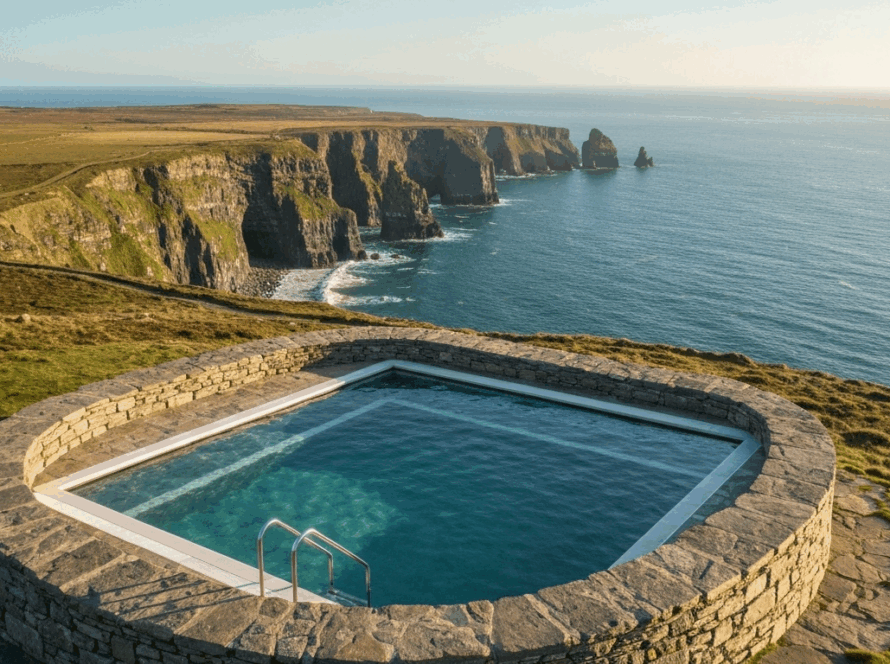Here is a quick look at what you will find about cold water immersion:
- Cold plunge tubs bring a lot of health benefits. They help your muscles get better faster and may support certain immune responses and reduce self-reported sick leave.
- Cold water immersion is good for the mind too. It can help you focus and feel happier.
- Doing cold plunges trains your body’s stress response. This helps you handle stress better over time.
- Cold water immersion is good, but it is also important to know the risks (cold shock, cardiac strain). You should follow all safety rules, especially in the beginning.
- Starting with cold plunges is easy if you use the right temperature and time.
Introduction
Have you seen how many people are getting into cold plunge tubs these days? From top athletes to those who love wellness, there are more people every day trying out cold water. People now use cold water immersion not just for old remedies but also as a normal way to boost health. If you want to know about the health benefits and how a cold plunge can fit into your routine, you are at the right spot. This guide will tell you all about cold plunge tubs and how you can use them for your wellness.
Understanding Cold Plunge Tubs and Ice Baths
Before you get into cold plunge tubs, it is good to know what these are and how they work. Cold plunge tubs, or ice baths, are made for cold water immersion. This means you put your body into cold water for a short time.
This type of cold exposure is not like a normal bath. It is a way to help your body on purpose and to get certain physiological responses. We will look at what makes a cold plunge tub, its main parts, and how it is not the same as a regular bathtub.
The Cold Plunge, What Is It?
A cold plunge tub is a tub made for you to get into very cold water for a short time. You can think of it like an ice bath, but this one is set up just for this practice. The main reason people use it is not for relaxing, but for the health benefits that come from cold exposure. The cold water in these tubs is usually held between typically 10–15 °C (50–59 °F) for general use; advanced users sometimes go 4–10 °C. That is much colder than your body.
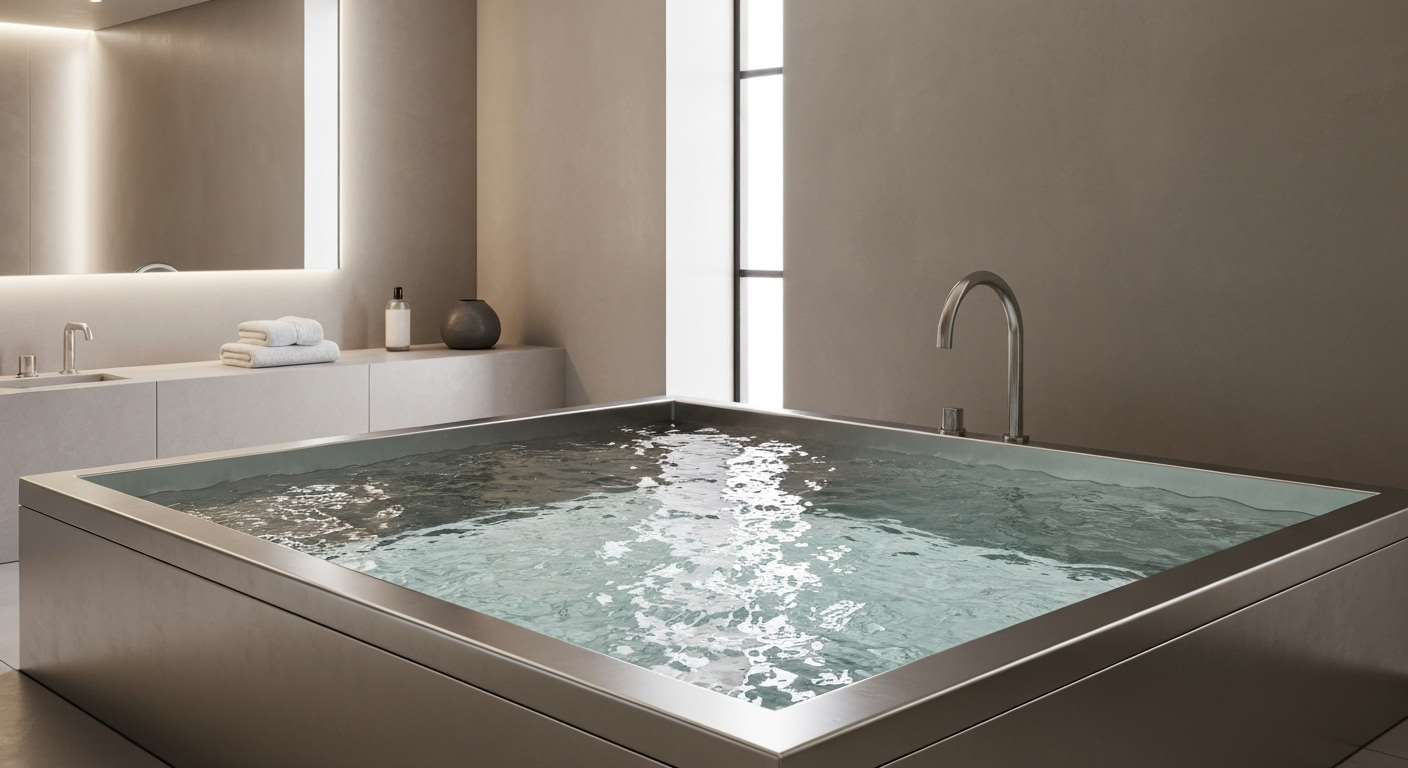
This cold plunge is a short and planned activity. You don’t stay in the cold water for a long time like you would in a warm bath. Most people stay in the icy water for only 30-60 seconds. The cold jolt that you get from getting in will send signals through your body. This can help with problems like muscle soreness, and give you better mental clarity.
You could try this by putting ice and cold water in a normal bathtub. Still, there are special cold plunge tubs that keep the cold water at just the right degrees Fahrenheit. Using a tub made for cold plunge can also help you get the most out of the health benefits of cold water.
How The Plunge Cold Water Tubs Differ from Traditional Baths
While both are tubs that you fill with water, cold plunge tubs and traditional baths do not have the same use. People usually fill a traditional bath with warm or hot water. You use the bath to clean yourself, relax, or feel comfortable. It is normal to sit in it for a long time. The heat can help you relax and help tired muscles.
On the other hand, a cold plunge tub is used for something else. This tub has cold water on purpose, and you do not stay in it for long. Most times, people sit in the cold plunge for only a few minutes. The cold water exposure is meant to wake up your body, help improve Circulation, lower swelling, and make your mental state sharper. You do not use it just to relax in the usual way.
Hot baths and cold plunge tubs change your body temperature in different ways. A hot bath makes your body temperature go up. It can help you calm down and get sleepy. With a cold plunge, your skin gets cold very fast. This makes your blood vessels tighter and can make you more alert and full of energy.
The Science Behind Ice Plunge Therapy
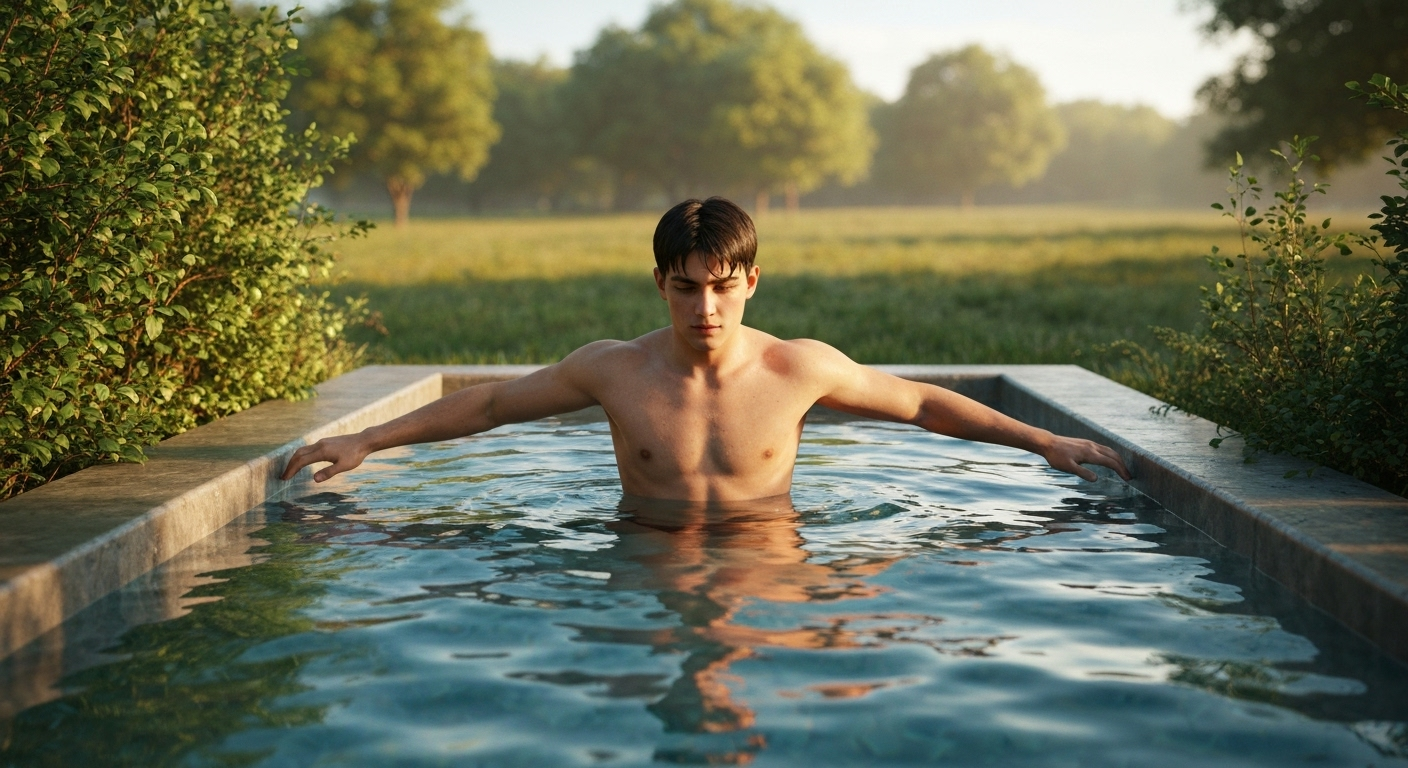
More people are starting to try cold water immersion. This is not just because of how it feels, but there is new science that helps explain what happens in your body. When you get into cold water, your body does something right away called the “cold shock response.” This response makes your body go through a lot of changes.
There are many ideas going around about cold water on social media. Some of these claims run faster than the science. But many scientists are still working hard to find out how cold water immersion changes your body and mind. Now, let’s look at what we know so far about what cold shock does to your body and your mental health.
How the Plunging in Cold Water Affects the Body
Plunging into cold water sets off a series of immediate and dramatic reactions in your body. The first thing you’ll likely notice is the “cold shock response,” which includes an involuntary gasp for air followed by rapid breathing, or hyperventilation. Your heart rate and blood pressure will also spike as your system reacts to the sudden temperature drop.
Internally, your blood vessels constrict, a process called vasoconstriction. This is your body’s clever way of reducing blood flow to your extremities (like your hands and feet) and directing it towards your vital organs to keep your core body temperature stable. This redirection of blood is a key mechanism behind many of the health benefits.
Understanding these initial responses is crucial for a safe practice. Here’s a simple breakdown of what happens:
|
Bodily Response |
Description |
|---|---|
|
Breathing |
An initial gasp, followed by rapid, and sometimes uncontrolled, breathing. |
|
Heart Rate |
Spikes upwards as your body experiences the initial shock of the cold. |
|
Blood Vessels |
Tighten and constrict to reduce heat loss and protect your core organs. |
|
Blood Pressure |
Rises temporarily as your blood vessels narrow. |
Research on Physical and Mental Health Benefits the Plunge Cold Therapy
There is more proof now showing the health benefits of cold plunges. Studies are looking at what cold water does for the body and mind. For physical health, the research looks good. One study from 2021 checked how cold water helps recovery for soccer players at university level. It showed that cold water immersion helped them get better after playing. This adds to what athletes already do with ice baths to help with sore muscles.
In terms of mental health, most proof comes from what people say, but it still means a lot. Many people who do cold plunges say they feel more alert, focused, and strong in their mind. They talk about a “post-swim high” where they feel calm and clear each day or even for a few days.
Even though bigger studies may be needed to learn more for the long run, what we know now is good. It is best to be real about what cold water can do and remember to not use it instead of medical advice.
Insights from Medical Experts and Recent Studies the Cold Plunge
Medical experts and researchers are now looking closer at claims about cold water immersion. Sports medicine doctor Dr. Dominic King, DO, says he has seen many people get good results from ice baths. Some get physical, mental, and functional help by using this cold therapy. He also says this help is different for each person, but many have good things to say.
New studies offer some first-time findings. One big study from the Netherlands showed people who ended showers with cold water for just 30 to 90 seconds took 29% fewer sick days at work than others. This link gives proof that cold exposure might help the body fight sickness.
Here are some main points from new reports:
- Cold exposure may help improve how the body reacts to insulin, which helps keep blood sugar in check.
- It can make the body release markers that lower swelling.
- Having more ice baths or cold therapy sessions could help the nervous system deal with stress better.
Main Health Benefits of Cold Water Plunges
Cold plunges offer a myriad of health benefits, significantly impacting both physical and mental wellness. The rapid exposure to very cold water triggers the body’s sympathetic nervous system, enhancing metabolic functions and promoting insulin sensitivity. Increased blood flow due to improved cardiovascular health facilitates muscle recovery and growth, can help reduce perceived soreness (protocol-dependent). Additionally, cold exposure can elevate mental clarity while reducing stress hormones, leading to improved mental health. Embracing cold water therapy also may bolster the immune system, equipping the body to better respond to various health conditions.
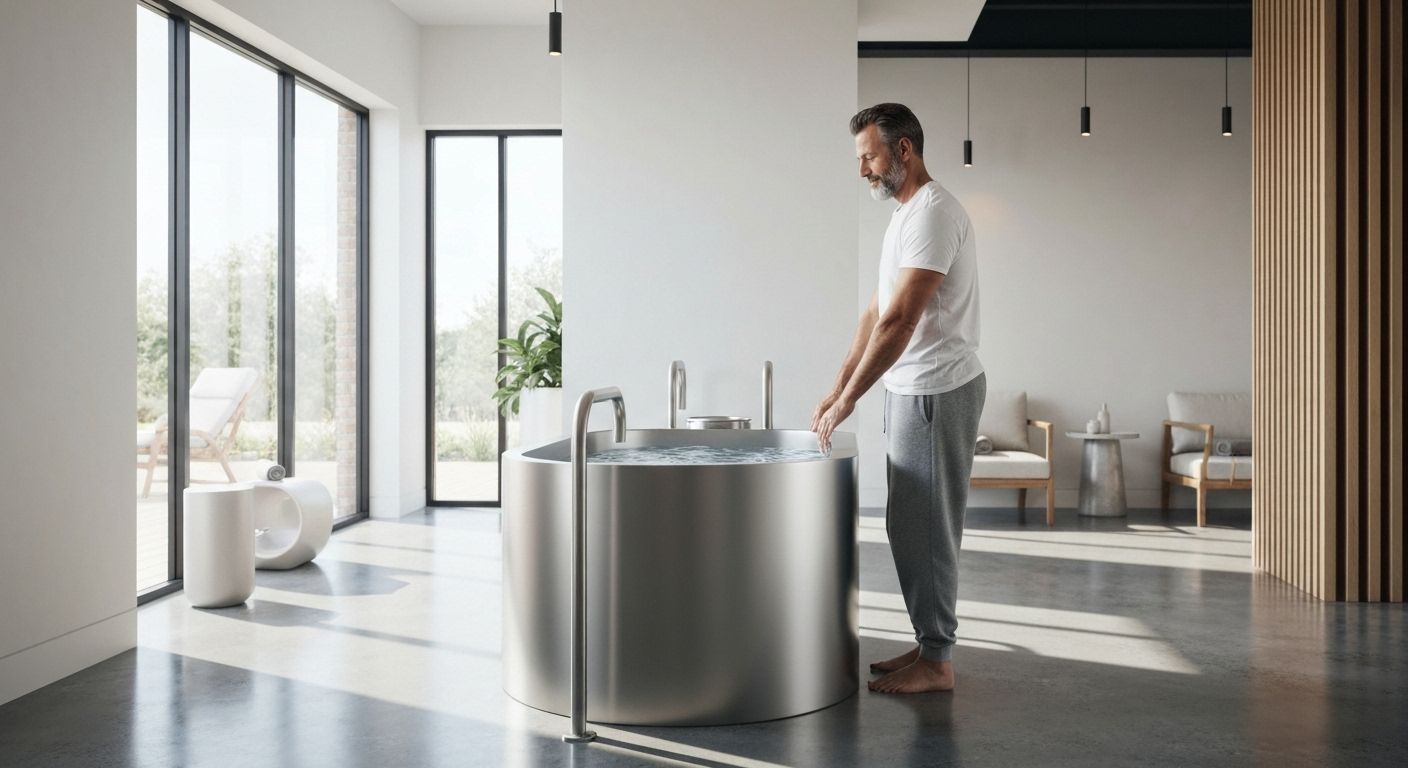
Enhanced Circulation and Cardiovascular Health
One of the most important physical benefits of a cold plunge is how it affects your circulation. When you get into cold water, your blood vessels become smaller and narrow. This moves blood away from your skin and into your core to help keep warmth. After you leave the cold water and begin to warm up, your blood vessels get bigger and open up again. This sends fresh, oxygen-rich blood back to your muscles and tissues.
This changing of your blood vessels, from small to big, works like a simple workout for your body’s blood flow. Over time, it can lead to better blood flow and may help with your heart and blood health. But you must remember, the cold water at first can be a shock and put stress on your heart.
The sudden cold makes your heart rate go up and your blood pressure rise. Because of this, if you already have heart conditions or if you deal with high blood pressure, you should check with your doctor before you try a cold plunge.
Boosted Immunity and Defence Against Illness
Could taking a dip in cold water help you stay healthy? Some research says it can. When you expose your body to cold water often, it may help the body make more white blood cells, which fight illness and disease. The idea is that the stress response you get from cold exposure turns on your immune system. This makes it more ready and strong.
For example, a study on swimmers in Cape Town found that they had almost a third fewer chest and throat infections compared to people who did not swim in cold water during the year’s colder months. This fits with the thought that the body can build better defences after you get used to the cold.
When you go into cold water, your body puts out stress hormones. These can help prepare the body to fight off sickness. We need more studies to be sure of this. But right now, it looks like cold water immersion could help the immune system be stronger.
Reduced Inflammation and Muscle Recovery
If you have ever put an ice pack on an injury, you know how this works. Cold therapy is used by people to lower swelling and inflammation. When you sit in a cold plunge tub, your blood vessels get smaller. This makes blood flow less to your muscles and tissues. It helps cut down on swelling after you exercise and helps with sore muscles.
This is one reason many athletes like ice baths for recovery after exercise. When you come out of the tub and your body starts to get warm again, the blood vessels become bigger. Fresh blood full of oxygen and nutrients moves into the area, which helps the body heal.
Cold plunges can help you:
- Ease the discomfort of sore muscles after a workout.
- Reduce swelling related to inflammation.
- Decrease your core body temperature quickly after intense exercise.
Mental Wellbeing and Cold Water Therapy
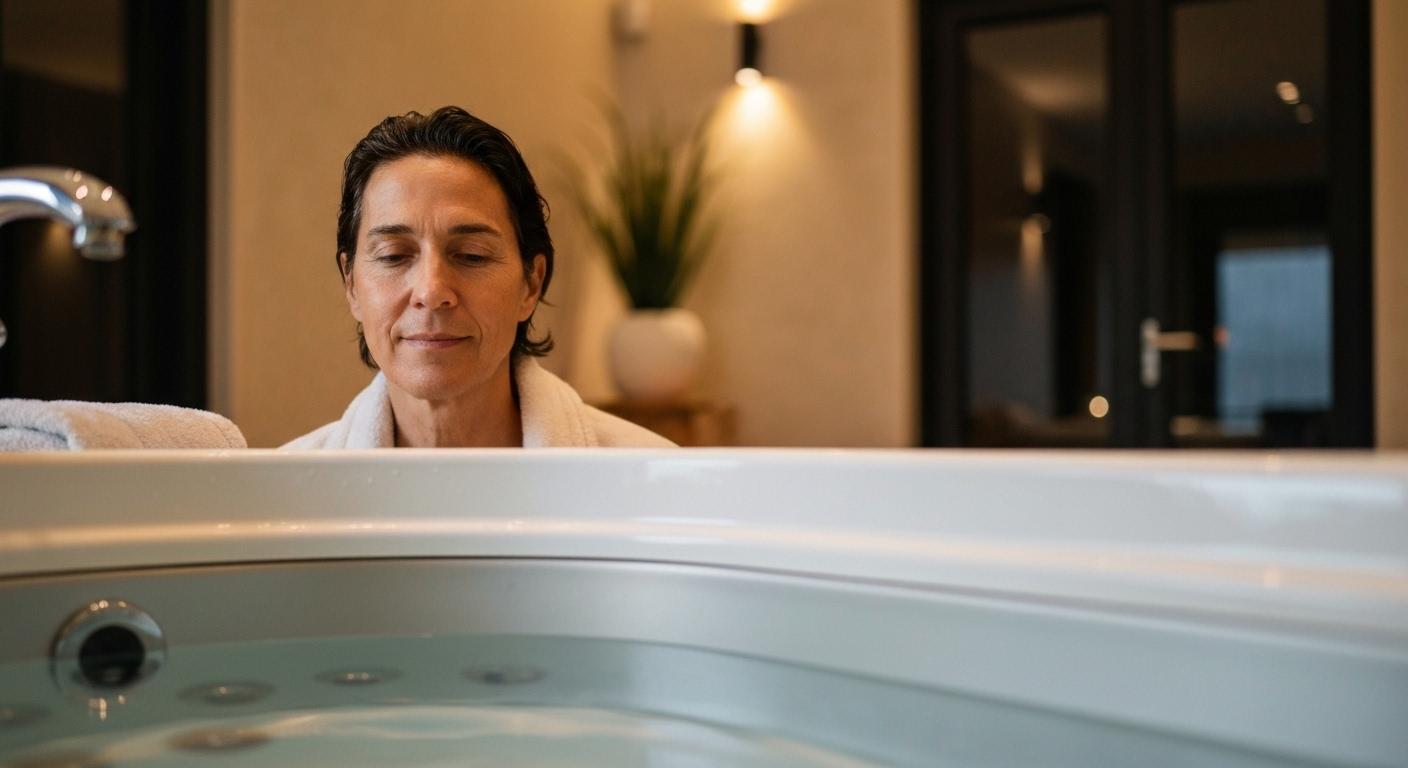
The benefits of cold water therapy are not just about your body. Many people say cold plunging helps a lot with their mental state, too. When you get into cold water, the strong feeling from the cold can help lift your mood, help you focus, and make you feel stronger inside.
The cold hits you and makes your brain send out chemicals, like endorphins and noradrenaline. These can help you feel more awake, happy, and ready to take on things. This is how cold water and cold plunging can help with your mental wellbeing.
Impact on Stress and Anxiety
Taking a dip in cold water can be a good way to teach your body how to handle stress. This method is called “cross-adaptation.” You put your body to one type of stress, which is the cold, and that can help you get better at dealing with other stress in your life. Every time you get into the cold water, you build up strength and resilience.
When you step into cold water, your body steps into the “fight-or-flight” mode. This is a strong response that makes your heart rate go up. If you focus on your breathing and stay calm, your nervous system learns to move out of this state faster. Some studies say doing cold water plunges may help lower cortisol levels. Cortisol is the main stress hormone. Cold water can help your body reset after stress.
After going through this process, you may feel more calm and in control. This does not happen just when you are in the cold water. It can help you in your regular day, too. Over time, you may see that you get less upset by stress or worry. You have better control of your mind and your reactions. Your nervous system gets trained, making you feel stronger all around.
Improved Mood and Mental Clarity
Have you ever heard someone talk about the “post-plunge high”? There’s a reason this happens. When you put your body into cold water, it helps the body let out endorphins. These are the body’s natural helpers for better mood. They make you feel happy and good, even after you finish and dry off.
Your body also sends out noradrenaline when you use cold water. This is a type of chemical that is important for keeping good focus, mood, and helping you pay attention. This boost can make you feel switched on, active, and more sharp in your mind. Taking a cold plunge in the morning is a great way to start the day with energy and mental clarity, and you do not need coffee for it.
There are some mental health benefits from this practice, such as:
- An immediate raise in mood.
- Feeling more active and wanting to do things.
- Better focus and being able to pay attention.
The health benefits of cold water are great for your mental health. It helps with mental clarity, too.
Cold Plunge Health Practices for Everyday Wellness
Cold plunges are becoming more popular and are not just something that athletes do. Now, people from all kinds of backgrounds are trying it as a way to feel better overall. Social media has helped this trend grow even faster. With cold plunging, it’s not just about sitting in cold water—it’s about making the mind and body stronger. When you get past the tough feeling that comes with cold water, you learn to deal with hard things. This lesson can help you in other parts of your life, too.
Many people now see cold plunging as a social activity. For example, groups like the Puget Sound Plungers in the U.S. get together to do it. They meet often and take the plunge as a group. It builds a sense of belonging, and people help each other. Feeling supported can be just as good for you as the way cold water affects your body.
You might use cold plunging for muscle recovery, to help your mind, or just to feel proud after doing something hard. No matter what, it can be a powerful part of your daily habits. Cold plunging brings together your body, mind, and spirit in a special way.
Risks and Safety Considerations
While many people talk about the benefits of cold plunges, you need to be careful and always think about safety first. The cold shock that happens to your body is a strong stress and could be risky. If you are not ready or if you have health problems, this can bring dangers like hypothermia and cardiovascular stress.
Before you try this, make sure you know about these risks and what you can do to avoid them. Safety should always be your main goal. If you are not sure about anything, get medical advice first. Now, let’s talk about who should be very careful and what steps everyone should use to stay safe.
Who Should Avoid Cold Plunge Tubs?
Cold plunge tubs are not for everyone. The shock of the cold water puts stress on your heart and can be risky for people with some health conditions. You should talk to your doctor before you try a cold plunge, mainly if you have any medical concerns.
People who take medications that lower blood pressure or heart rate, like beta-blockers, need to be careful. These can change the way your body deals with the cold water. Your doctor can also help you know if it is safe for you to get into a cold plunge.
You should not use cold plunge tubs, or you should get medical advice first, if you have:
- Heart disease or any heart conditions
- High blood pressure
- Diabetes or issues with nerve or blood flow in your legs or arms
- Raynaud’s phenomenon or poor blood circulation
Safe Practices for All Ages
To get the good side of cold plunging and stay away from potential risks, the best thing is to follow safe steps. This way, you can make the most of your experience and keep safe, no matter your age or how fit you are. The main thing to remember is to start slow. Do not force your body to go beyond what it can take.
There is one important rule when it comes to cold plunging. You should never do it by yourself, more so in open water. Make sure you have someone with you. That way, if a medical emergency happens, help is near. After your cold plunge, you will want to warm up well. Dry off, change to warm clothing, and try sipping a warm beverage.
Here are a few safe practices that you need to keep in mind:
- Enter the water slowly: Give your body a chance to get used to it, which helps lessen cold shock.
- Keep it brief: Start with 30 to 60 seconds, then build up slowly over time. Do not stay in for longer than 5 to 10 minutes.
- Listen to your body: If you do not feel good or if it gets too tough, come out right away.
Starting Your Cold Plunge Routine
Are you ready to try your own cold plunge routine? Getting started with cold water isn’t as scary as it looks. The best way is to start slow and pay attention to how your body feels. You do not have to jump right into very cold water or stay in it for 10 minutes in the beginning. A good and lasting cold plunge habit happens step-by-step.
If you choose the water temperature carefully, keep an eye on how long you stay in, and follow a few easy tips, you can add cold water exposure to your life safely. Let’s see how you can start this new journey.
Cold Plunge Degrees: Finding the Ideal Temperature
Finding the right water temperature is the first and most important step. There is not just one “perfect” temperature for everyone, because the best level of cold depends on your own tolerance and experience with cold water. If you are new to this, you should start with warmer water and move to colder water as you get used to it.
A good range to begin with is between 10 to 15 degrees Celsius (50-59°F). This water is cold enough to bring out the needed physiological responses, but it is not too much for most people. Sports medicine doctor Dr. Dominic King says, “Start low and go slow.” You can even start with water at about 20°C (68°F). This is still cold and will let your body get used to the feeling.
When you get more used to the cold, you may want to try even lower water temperatures, but most people should not go below 4°C (40°F). Using a thermometer is a good way to keep track of the water temperature so you stay safe and get the best out of your plunges.
Tips for Beginners Using Eco Hearth Ice Baths
Starting out with cold water immersion using an Eco Hearth ice bath can make things much easier and more pleasant. The tubs are simple to use, but being ready is important. A little planning can help make your first dips a success. The aim is to make a calm space where you feel in control.
Before you get in, get your mind set. Remind yourself that it will be cold at first, but stay true to what you want to do. Have a warm towel and some dry clothes ready for after you get out. When the cold shock hits, focus on your breathing. Take slow, deep breaths to help your nervous system stay calm.
Here are a few more things to help as you start your cold water journey:
- Never plunge alone. Always have someone close to you, at least for the first few sessions.
- Enter the tub slowly. Go in gently, so your body can get used to the cold water and it does not shock you as much.
- Focus on your breath. Take long, slow exhales and don’t let yourself start to breathe too fast.
- Warm up naturally. When you get out, dry off and walk around to bring up your body heat. Don’t go straight into a hot shower, since a big difference in temperature right away can be tough on your body.
Conclusion
To sum up, adding a cold plunge tub to your routine can give you many health benefits. Cold water can help your immune system and make your mind clearer. When you learn how cold water works in the body and know why it is important to stay safe, you can start a fresh new path to feeling better. It is important to care for both your mind and body, and a cold plunge is a good part of a total wellness plan. If you want to know more about cold water therapy, reach out to us. Eco Hearth’s ice baths can help you get closer to your health goals.
Frequently Asked Questions
Are cold plunge tubs suitable for everyone in Ireland’s climate?
Yes, cold plunge tubs can work well in Ireland, even with the climate there. You can set the water temperature to what you want. But it is important to talk to your doctor before you start, mainly if you have any health conditions. This way, you know it will be safe for you to use a cold plunge.
How long should I stay in a Cold Plunge Tub for Optimal benefits?
To get the most out of cold water immersion, you should begin by staying in the cold water for only 30 to 60 seconds. As your body gets used to it, you can slowly add more time and stay in for 2 minute cold plunge to 5 minutes. It is not good to stay in cold water for over 10 minute cold plunge. This is because being in cold water for too long could be risky for your health.
Do I need special equipment or accessories to set up a cold plunge tub at home?
Setting up a cold water plunge tub at home doesn’t require extensive equipment, but there are a few accessories that can enhance your experience. A thermometer is essential to monitor water temperature, ensuring it remains within a safe range for immersion.
Eco Hearth tubs are made to be easy for anyone to set up at home. The main things you will need are a water source and a flat place for the tub. It also helps to use a waterproof thermometer. This lets you check the water temperature so you can make sure it stays safe and works well.
What’s the best way to do a cold plunge at home?
To effectively do a cold plunge at home, start by preparing your space. Choose a quiet location that allows for privacy and comfort. Fill your cold plunge tub with water, adjusting the temperature to your preference — ideally between 50°F (10°C) and 59°F (15°C). With a built-in chiller, and Wi-Fi control, our Ice Bath makes every plunge simple, safe, and refreshing. Before entering, take a moment to breathe deeply and mentally prepare yourself for the experience. When you’re ready, ease into the water slowly to help your body acclimate. Once in, focus on maintaining control over your breathing; deep, steady breaths will help you relax despite the cold. Eco Hearth with our series of ice baths offers the ultimate way to enjoy cold plunge at home.
Cold plunge: how to breathe and stay calm in the water?
As you immerse yourself in the cold plunge, focusing on your breath becomes crucial. Start by taking a few deep breaths before entering the tub. Once you’re in, try to maintain a steady rhythm with your breathing. Inhale deeply through your nose for a count of four, allowing your diaphragm to expand fully. Hold that breath for a moment, then exhale slowly through your mouth for another count of four, feeling your body relax with each release.If you begin to feel anxious or overwhelmed by the coldness, redirecting your thoughts can be beneficial.
References
[1] Bouzigon, R., et al. (2021). The Effect of Cold-Water Immersion on Recovery of Physical Performance, Physiological and Psychometric Measures in Male University Soccer Players. Journal of Human Kinetics, 79, 219–232. Available at: https://www.ncbi.nlm.nih.gov/pmc/articles/PMC8336332/
[2] King, D. (n.d.). The Benefits and Risks of Cold Plunges. Cleveland Clinic. Available at: https://health.clevelandclinic.org/cold-plunge-benefits
[3] Buijze, G. A., et al. (2016). The Effect of Cold Showering on Health and Work: A Randomized Controlled Trial. PLoS ONE, 11(9). Available at: https://journals.plos.org/plosone/article?id=10.1371/journal.pone.0161749


